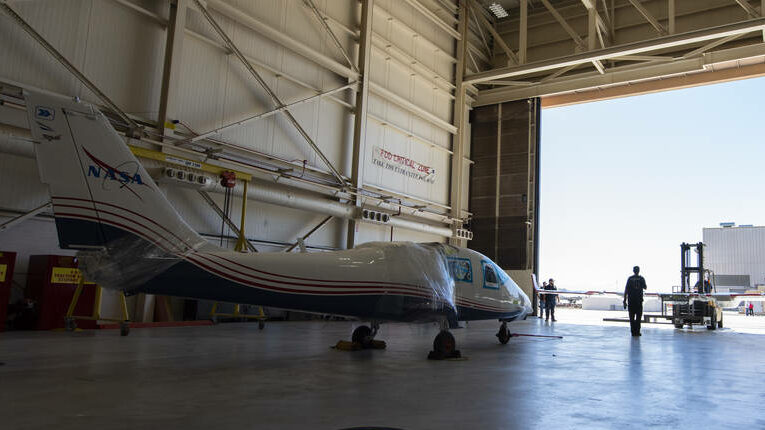San Luis Obispo company creates electric aircraft for NASA
October 10, 2019

NASA’s X-57 Maxwell
By CCT STAFF
A San Luis Obispo company delivered an all-electric X-plane to NASA for researching ideas that could lead to the development of electric propulsion-powered aircraft, which would be quieter, more efficient and environmentally friendlier than today’s commuter planes, according to NASA.
In addition to space exploration, NASA sets standards for the aviation industry. Working with Empirical Systems Aerospace (ESAero) of San Luis Obispo, NASA is striving to increase efficiency and lower harmful emissions.
ESAero transported a configuration of NASA’s X-57 Maxwell to the agency’s Armstrong Flight Research Center in Edwards. The X-57, is NASA’s first all-electric experimental aircraft, or X-plane.
The X-57’s Mod II vehicle features the replacement of traditional combustion engines on a baseline Tecnam P2006T aircraft, with electric cruise motors. The delivery is a major milestone for the project, allowing NASA engineers to begin putting the aircraft through ground tests, to be followed by taxi tests and eventually, flight tests.
NASA will share the aircraft’s electric-propulsion-focused design and airworthiness process with regulators and industry, which will advance certification approaches for aircraft utilizing distributed electric propulsion.
The X-57 team is using a “design driver” as a technical challenge, to drive lessons learned and best practices. This design driver includes a 500 percent increase in high-speed cruise efficiency, zero in-flight carbon emissions, and flight that is much quieter for communities on the ground.
The X-57 project operates under the Integrated Aviation Systems Program’s Flight Demonstrations and Capabilities project, within NASA’s Aeronautics Research Mission Directorate.
“The X-57 Mod II aircraft delivery to NASA is a significant event, marking the beginning of a new phase in this exciting electric X-plane project,” said X-57 Project Manager Tom Rigney. “With the aircraft in our possession, the X-57 team will soon conduct extensive ground testing of the integrated electric propulsion system to ensure the aircraft is airworthy. We plan to rapidly share valuable lessons learned along the way as we progress toward flight testing, helping to inform the growing electric aircraft market.”






The comments below represent the opinion of the writer and do not represent the views or policies of CalCoastNews.com. Please address the Policies, events and arguments, not the person. Constructive debate is good; mockery, taunting, and name calling is not. Comment Guidelines